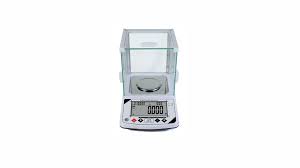Top Mistakes to Avoid While Using Analytical Balances in Laboratories
Using a precision lab scale? Avoid these common mistakes that could affect your weighing accuracy and put your lab results at risk — especially if you're NABL-audited.
7/23/20251 min read


Introduction
Laboratory scales are sensitive instruments — sometimes accurate to 0.0001 grams. Even the smallest errors in handling or environment can produce incorrect results, waste materials, or worse, lead to failed audits.
At Shree Shree Weighing Solutions, we regularly help clients across Ahmedabad and Gujarat troubleshoot issues due to human errors, incorrect calibration, or environmental mishandling.
Avoid these common mistakes to get the most out of your precision weighing machine.
❌ 1. Not Leveling the Scale
Lab scales must sit on level, vibration-free surfaces. An uneven or shaky platform can:
Disrupt loadcell function
Alter readings
Void calibration
Tip: Use the inbuilt leveling bubble and feet adjustments before use.
❌ 2. Weighing Without Taring
Failing to tare (zero) the scale with the container causes inaccurate net weights.
Tip: Always press the tare button after placing any empty beaker or vessel.
❌ 3. Weighing in Open Rooms or Near Fans
Open airflow can:
Move powders or liquids
Affect sensitive readings
Cause the display to fluctuate
Tip: Always weigh inside the draft shield.
❌ 4. Touching Samples or Pans with Bare Hands
Even the oil from fingertips can alter readings by milligrams.
Tip: Use forceps or gloves for accurate transfers.
❌ 5. Ignoring Calibration Schedules
Many labs calibrate only before audits — but daily or weekly calibration is best practice, especially for sensitive instruments.
Tip: Maintain a digital or physical calibration log for traceability.
❌ 6. Using Expired or Low-Quality Calibration Weights
Poor quality weights compromise your entire weighing protocol.
Tip: Use NABL-certified test weights and recalibrate them annually.
📈 Bonus: Proper Usage = Better Results + Longer Lifespan
By avoiding these mistakes, you:
Improve accuracy and reproducibility
Extend your scale’s lifespan
Pass audits more easily
Reduce lab rework and costs
